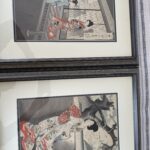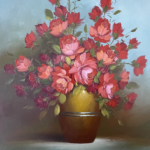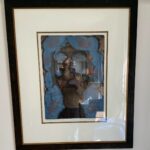Original Edgar Degas etching of marguerite with authenticated certificate
This is a professional appraisal report provided upon request. It contains a detailed description and valuation of . This document also includes information about provenance, author, style of painting, date, how to sell your artwork and about the valuation method we’ve used.
This report is designed to give you an appraisal value for the Art you own, whether it is a painting or other type of art. The information provided will help you to understand your piece and its value. It also provides an appraisal value in US dollars, as well as how to sell it. This report is not intended to encourage you to sell your art, rather it aims to provide information on your art’s value, so that you know what steps to take if you do wish to sell.
Description, research and provenance of
Image Recognition with Artificial Intelligence
To investigate this work of art, I used Image Recognition with Artificial Intelligence to try to find the first clues. Image recognition, in the context of machine vision, is the ability of software to identify artworks, objects, places, people, shapes or forms. Computers can use machine vision technologies based in artificial intelligence software to find images similar to the input pic. A specialized software is used to analyze if the front photograph of the artwork was listed on the internet. The software takes the picture as input, compares it with millions of other works in the database, and outputs similar images. From the results, I can use the information to interpret the artwork and, sometimes, find a direct match. This software will be useful later to determine the origin of the art piece. The results of the automatic recognition are not conclusive. If a match is found, it will be showed below:
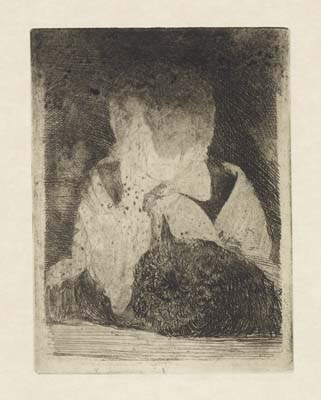
From this part of the report we can conclude the following:
- The algorithm found an exact match. In this case, the artwork is a known, referenced artwork that was directly identified by the software. Most cases include limited edition prints, regular prints or signed in plate prints. In this case this is an original etching by Degas.
Signature Research
In this part, I study and research the signature of the artwork. Some signature are easy to interpret, while others present several difficulties to read them. In some cases, the signature is totally unreadable. For this painting, I don’t have a picture of the signature, but we have a Certificate of Authenticity:
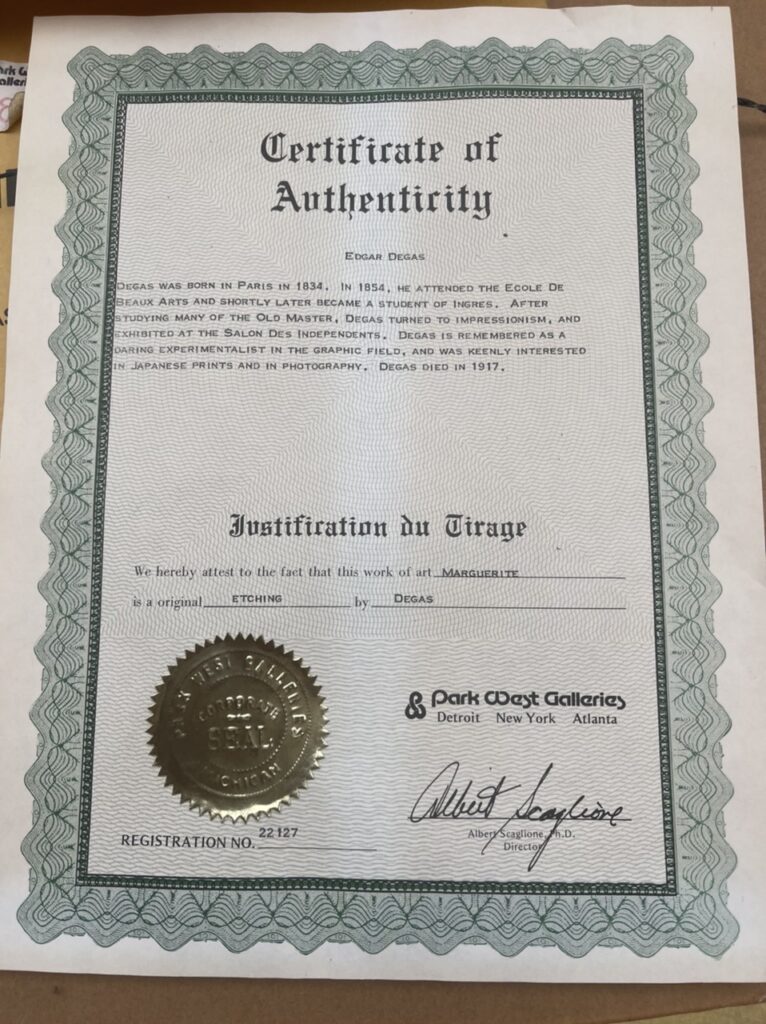
In this case, I find the COA original and legitimate. This etching forms part of a series of Etchings, here is the final version made by Degas:
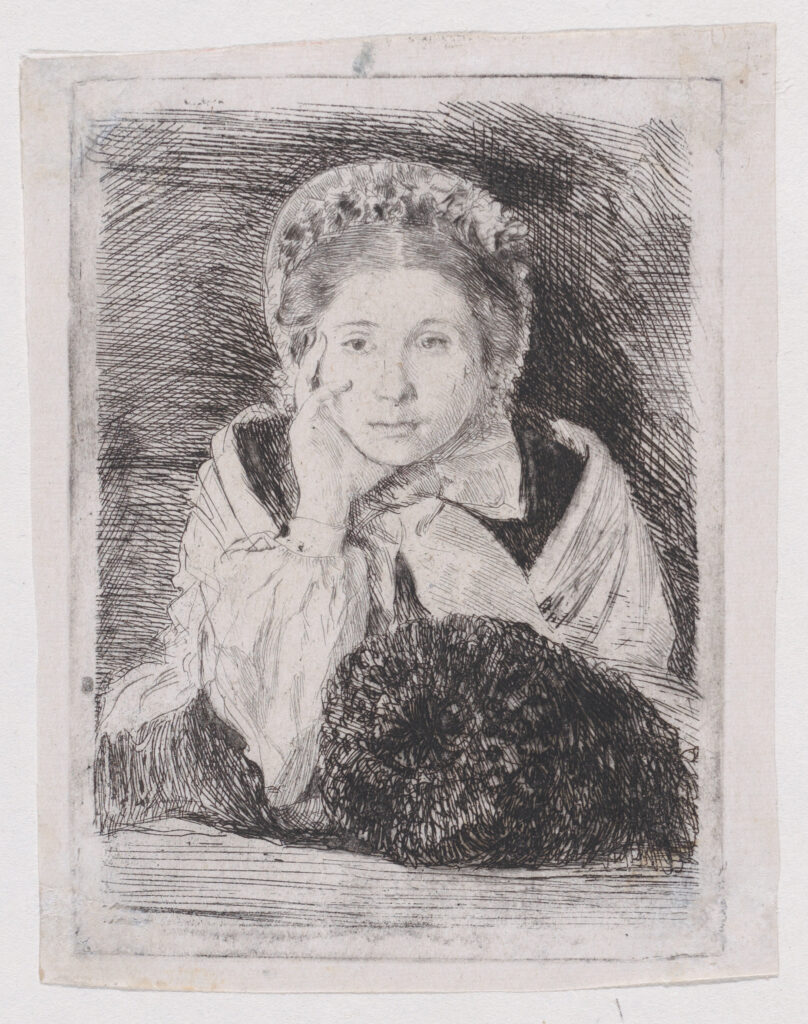
This exquisite, intimate portrait of the artist’s sister Marguerite De Gas dates from shortly after Degas’s return to Paris following a three-year sojourn in Italy. It demonstrates his increasing sophistication with the medium of etching, which he had begun to explore in earnest while abroad. Portraiture dominated Degas’s practice in this period, and his earliest work in the genre focused naturally on his family members. This is the only extant impression of the second state of the etching and the most successful of the six states he printed. Degas indicated his preference for it by approving the production of a heliogravure (photographic print) based on this impression after he ruined the plate by overworking it. [source]
Conclusion
I think this artwork is valuable and can be interested to art collectors and decorators.
The quality is good and the composition is well balanced and the color scheme used by the artist is unique, attractive and inviting. I think this piece of art would be of interest to collectors and/or decorators. You don’t find paintings of this quality every day.
: Final Appraisal Value ($)
10,000-15,000$
Appraisal Report made by:
Andrés Gómez
BSc, MSc, Expert Art Appraiser
10+ year of Experience in Online Art Appraisals.
100k+ Customers Served.
Antique Store Owner.
You can check my portofolio of past appraisals here:
https://www.appraisily.com/andres-portofolio/
Signature:

Pictures received
We have Experts online now.
How to sell it
Antiques, art, and other collectibles are difficult items to sell online. This can take a lot of time. Be patient, but also make sure that the price you are asking for is the right one for your pieces of art. Consider the following tips on how to sell antiques and collectibles online. These tips will help maximize the price of your antique or collectible.
I would recommend selling it online, there are many ways to do this, for instance: Post an ad on Craigslist. Use eBay to sell antiques online. Post a listing on the Etsy marketplace. Sell with direct messages using Instagram. Create a website using Squarespace or WordPress. Use Shopify to sell via a website, POS and social channels. List your items on Bonanza.com, Facebook Marketplaces or Amazon Marketplace. The higher number of ads the better, if you don’t have time, I would recommend to start with Facebook, Etsy and Amazon.
The key to selling antiques on-line is to let potential customers know that you know what you are talking about. It’s much more difficult to sell something when the potential buyer can’t be sure it is authentic. Sellers should use a well thought out descriptive guides, like this report. A good lead generation service should be helpful in establishing these relationships with online buyers, and an effective way to do this is through a classified ads. If a buyer asks for more information, giving them some valuable facts well ahead of time will get you more sales because your reputation increases and real customers are the ones who ask for more details.
In order to sell your Antiques online, you will need to create a profile on the relevant forum (Etsy, Amazon and FB). Make sure you add a high-resolution image of the product (include at least 3 detailed photos) and add some text. The text should be informative and straight to the point, nothing fancy or fluffy.
Asking price is a big factor to sell your antique. If your asking price is too high (fancy company stickers, missing parts, or chip paint) you are unlikely to get many bids. If the asking price is too low it will cost you money for repairs, shipping, and insurance. As a general rule, I would recommend setting an asking price that is 80% of the value of this report, so you will make the listing attractive from the beginning.
About the valuation method
To value this item I have considered the results from past auction sales. Keep in mind that the final price can be different from asking prices that you can find on the internet. You can see ads on the internet with different asking prices. However, a very high asking price doesn’t normally find cash from a buyer.
That’s why our method comprises searching and comparing similar past sale results that had a buyer. That’s why we can provide an accurate estimation of this item.
For art pieces, remember that it isn’t the same a print, a limited edition print or an original art piece. If the artist can’t be identified, the value assigned corresponds to the quality and potential interest of the market for the painting.
To value this item I have considered the results from past auction sales. Keep in mind that the final price can be different from asking prices that you can find on the internet. You can see ads on the internet with different asking prices. However, a very high asking price doesn’t normally find cash from a buyer. That’s why our method comprises searching and comparing similar past sale results that had a buyer. That’s why we can provide an accurate estimation of this item.
Trying to determine likely interests and tastes of a broad market can be tricky. Works by a lesser-known artist may reveal greater interest to collectors than you might expect, but it is difficult to know without some market research. The same applies for artists who have works in the major museums or galleries but whose work doesn’t command large prices at auction or from dealers. Do not confuse print original limited edition. Be aware that the value of a piece of art is linked to the artist’s name and reputation. The quality of the work of art, its potential interest, are also major factors in its evaluation.
Quality art can be a good investment, but a large print or lithograph might not be as valuable. There are many different kinds of prints. An original piece of art has the highest value, followed by limited edition prints, which have a set number of prints produced.
